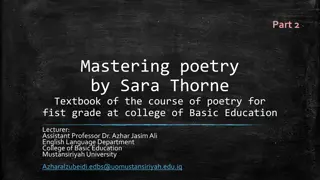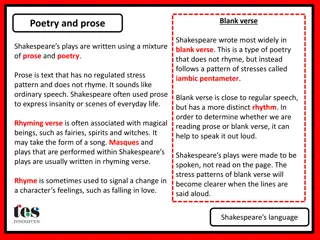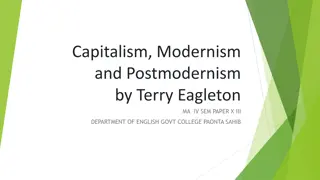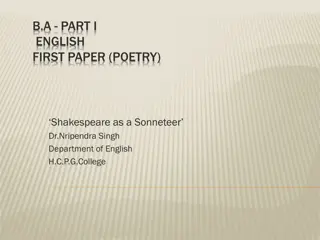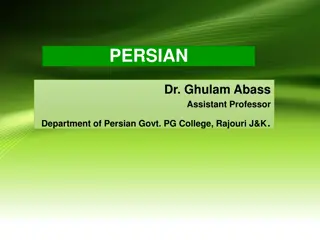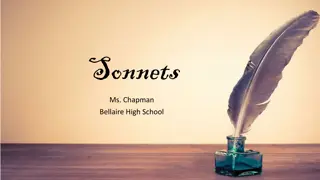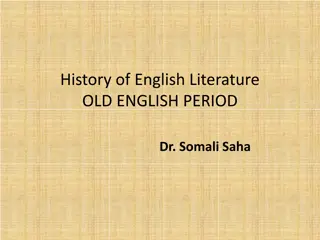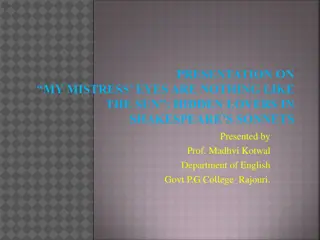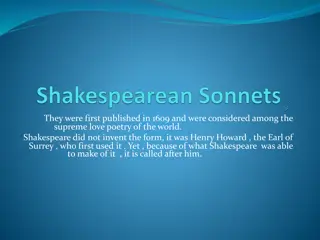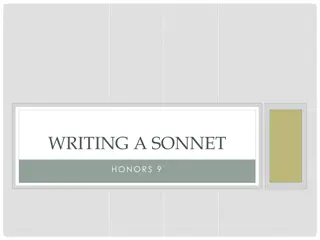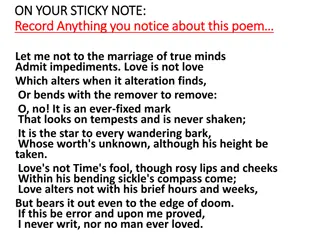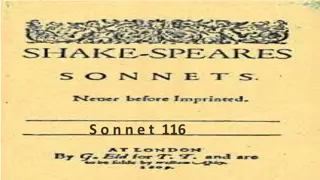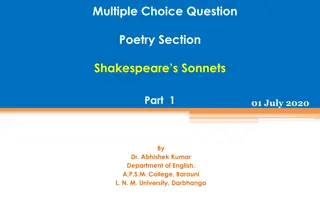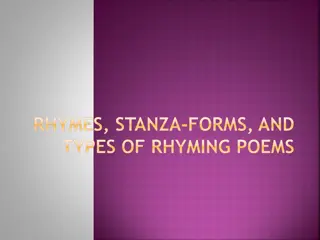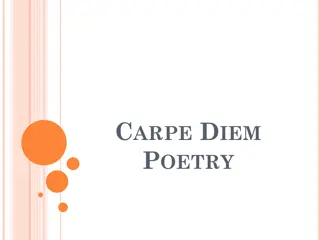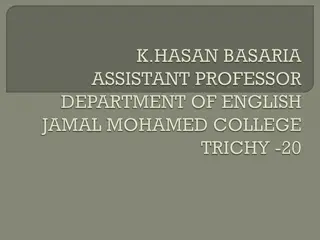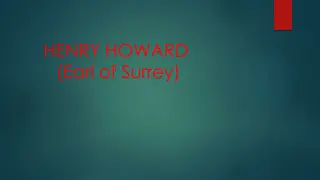The Art of Sonnets in English Literature
A sonnet is a 14-line lyric poem written in iambic pentameter with a specific rhyme scheme and thought structure. There are three main types of sonnets - Italian/Petrarchan, Spenserian, and English/Shakespearian. Each type has a unique rhyme scheme and style. Notable poets like Shakespeare, Spencer, and Sidney contributed to the evolution of sonnets in English literature.
Download Presentation

Please find below an Image/Link to download the presentation.
The content on the website is provided AS IS for your information and personal use only. It may not be sold, licensed, or shared on other websites without obtaining consent from the author. Download presentation by click this link. If you encounter any issues during the download, it is possible that the publisher has removed the file from their server.
E N D
Presentation Transcript
SONNET IN ENGLISH LITERATURE (MA 1 SEM PAPER 1) Government Degree College Paonta Sahib Distt Sirmour HP
A sonnet isa lyric poem consisting of fourteen lines written in iambic pentameter with a definite rhyme scheme and a definite thought structure A sonnet introduces a problem or question in the beginning, and a resolution is offered after the turn.
Different Types of SonnetsThere are three main forms of sonnets that can be used. The reason there isn't just one is because they all differentiate in there rhyme schemes and that sets them apart. The First Type of Sonnet is the Italian or Petrarchan Sonnet. The rhyme scheme is a b b a a b b a, d d c d c d c d c d c d c d e c d e c d e c e d c d c e d c
The second type of sonnet is the Spenserian Sonnet Its Rhyme scheme is a b a b b c b c c d c d e e Lastly the final one is the English or Shakespearian Sonnet. The rhyme Scheme is a b a b c d c d e f e f g g. This is the one Shakespeare used often.
Shakespeares sonnet sequence includes 154 sonnets. Spenser s main sonnet series is a collection entitled Amoretti and Sidney s most famous sonnet series is entitled Astrophil and Stella.
SPENSERIAN SONNET 1500-1580 English abab bcbc cdcdee Edmund Spencer Sir Philip Sidney Spencer Fairie Queene Amoretti (in text book, Sonnet 1, 35, 75) Sidney Astrophel and Stella (in text book Sonnet 31, 39) frustration, loneliness or disappointment with love
SHAKESPEAREAN SONNET 1570-1600 English abab cdcd efef gg 3 quatrains 1 rhyming couplet often a dramatic statement that resolves, restates or redefines the central problem of the sonnet Normally written in iambic pentameter William Shakespeare 154 Sonnets addressed to young man dark lady rival poet time, death, love, and friendship 11
What is the rhyme scheme? Where is the turn of thought? Based on your answers, what kind of sonnet is it? Write these questions on your paper and answer them when the sonnet is shown.
Structure What are the groupings of the lines (how many lines are in each group)? What is the rhyme scheme? Where is the turn? Based on your answers, what kind of sonnet is it? Write these questions on your paper and answer them when the sonnet is shown.
Lines are in an octave (eight lines) and a sestet (six lines). Rhyme scheme is abbaabba cdcdcd. The turn in this sonnet is between the octave and the sestet, or after eight lines. The period at the end of line eight is a clue that this is the turn, especially because it is one of only two periods in the sonnet. Before the turn, the speaker is telling of groups of fourteen after the turn, he tells of who wrote the sonnets.
Petrarchan (Italian) rhyme scheme abba, abba, cd, cd, cd abba, abba, cde, cde Shakespearean (English, or Elizabethan) rhyme scheme abab, cdcd, efef, gg
Thought structureOctave/ sestet The octave, eight lines, presents a situation or idea. The sestet (sextet), six lines, responds, to the situation or idea in the octave. Quatrain, quatrain, quatrain, couplet Each quatrain, four lines, describes an idea or situation which leads to a conclusion or response in the couplet, two lines.


![[PDF⚡READ❤ONLINE] In Ruins: A Journey Through History, Art, and Literature](/thumb/20543/pdf-read-online-in-ruins-a-journey-through-history-art-and-literature.jpg)


